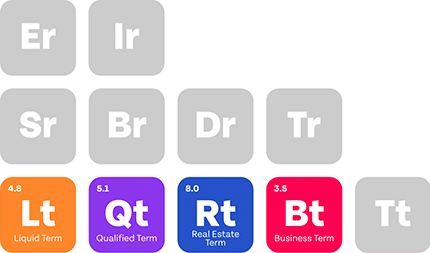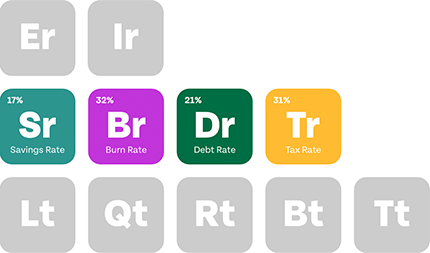Key Takeaways
- Pediatricians earn an average of $237,504 annually, varying by state and subspecialty.
- Top-paying states include Alaska and Wisconsin; lower-paying states include Alabama.
- Subspecialties like pediatric cardiology and critical care earn significantly higher salaries.
- Salary trends reflect modest growth but are influenced by demand and healthcare changes.
In almost all medical specialties, if your title is preceded by “pediatric,” you take a significant pay cut.
However, there is a measure of nobility earned with this pay cut. A pediatrician will usually earn around $237,504 a year, though the numbers can vary a lot.
Based on Physicians Thrive compensation data research, we’ve provided recent data on how much you can earn as a pediatrician in various conditions.
Table of Contents
What’s the Average Pediatrician Salary?

The average pediatrician salary in the US in 2024 is around $237,504 per annum.
While the salary report data for 2024 has yet to be fully compiled, we can project the current salary data based on healthcare sector trends. Pediatrician salaries tend to follow inflation adjustments, changes in healthcare policies, and demand for pediatric services.
Based on this:
- The annual median salary is expected to be at $202,000 based on a modest growth rate
- The lowest 10% might see salaries in the range of $120,000 to $130,000, while the top 10% could exceed $260,000
- Average hourly wage might edge up to around $97 to $98 per hour
Pediatrician Salary By State
Several factors can significantly affect the average pediatrician’s income; one of them is location.
This is due to the varying cost of living and demand for your specialty in different locations. Here’s the data we’ve compiled for the top and lowest-paying states for pediatricians.
5 Top-Paying States
Alaska, Wisconsin, Mississippi, Nevada, and Montana are the states where pediatric physicians earn the most. The average income of full-time pediatricians is about $218,000 per year in all these states.

- Alaska: $268,010
- Wisconsin: $263,580
- Mississippi: $259,890
- Nevada: $259,490
- Montana: $255,690
5 Lowest-paying States
Several states can’t afford to pay up to $200k due to factors like population density and healthcare demand. Some of the lowest-paying states for pediatricians include Puerto Rico, Alabama, Idaho, Arkansas, and West Virginia.
The average salary for all these states is $170,000

- Puerto Rico: $140,000
- Alabama: $170,000
- Idaho: $175,000
- Arkansas: $180,000
- West Virginia: $185,000
Pediatrician Pay by Subspecialties
General pediatricians can complete a fellowship to further specialize and move away from primary care. The subspecialty they choose can affect how much they earn.
Top Paying Pediatrician Subspecialties
Here are some of the top pediatric subspecialties and their correlating compensation data that impact the healthcare salary guide:

Pediatric Cardiology
Average Annual Salary: $290,000 – $350,000
Pediatric cardiologists specialize in diagnosing and treating heart conditions in children. Due to the complexity of heart diseases and the rising demand for specialized care, this subspecialty commands some of the highest salaries in pediatrics.
Pediatric Emergency Medicine
Average Annual Salary: $260,000 – $330,000
Pediatric emergency medicine physicians deal with acute and urgent health conditions in children.
Given the unpredictable nature and the fast-paced environment, this subspecialty offers a higher salary to compensate for the demanding work hours and skill set required.
Pediatric Critical Care Medicine
Average Annual Salary: $280,000 – $340,000
Closely related to emergency medicine but earning slightly less is the field of pediatric critical care medicine.
These specialists work with children in life-threatening situations, such as those in intensive care units (ICUs). The high-stress environment and need for specialized skills make pediatric critical care physicians among the highest earners in the field.
Pediatric Endocrinology
Average Annual Salary: $220,000 – $300,000
Pediatric endocrinologists manage hormone-related disorders, such as diabetes and growth abnormalities.
The increasing prevalence of childhood diabetes and other endocrine disorders has driven up the demand, making this one of the better-compensated subspecialties.
Pediatric Gastroenterology
Average Annual Salary: $230,000 – $290,000
Specialists in this field focus on digestive system disorders in children. With gastrointestinal issues like inflammatory bowel disease becoming more common, pediatric gastroenterologists are highly sought after, leading to higher salaries.
Lowest-Paying Pediatrician Subspecialties
These subspecialties, though essential, typically pay less. This could be because of lower demand, fewer high-stakes situations, or because specialists often work in academic settings.

Here’s a look at the lowest-paying pediatric subspecialties:
Pediatric Infectious Diseases
Average Annual Salary: $180,000 – $210,000
Pediatric infectious disease specialists treat infections in children caused by bacteria, viruses, and fungi. Despite the critical nature of their work, the demand for this subspecialty is relatively low, resulting in lower compensation compared to other fields.
Pediatric Rheumatology
Average Annual Salary: $190,000 – $220,000
Pediatric rheumatologists treat autoimmune and musculoskeletal conditions, such as juvenile arthritis. While important, these conditions are relatively rare, contributing to a lower average salary for this subspecialty.
Pediatric Hematology-Oncology
Average Annual Salary: $200,000 – $230,000
Specialists in this field deal with childhood cancers and blood disorders. Though it’s a critical area, compensation is often lower than expected, as this field is highly competitive, and many specialists work in academic or research settings with lower salaries.
Pediatric Nephrology
Average Annual Salary: $200,000 – $240,000
Pediatric nephrologists focus on kidney-related diseases in children. Though this subspecialty is crucial, the demand isn’t as high as in other, more commonly needed areas, resulting in lower overall pay.
Pediatric Pulmonology
Average Annual Salary: $210,000 – $250,000
These specialists treat respiratory and lung diseases, such as asthma and cystic fibrosis, in children. While vital, the number of cases typically handled is lower than subspecialties dealing with more life-threatening conditions, leading to a lower salary.
Pediatrician Salary Trend
Pediatric medicine has seen varying salary trends in recent years. In 2024, the average salary for a pediatrician increased to about $237,504 from $231,993 in 2023.
However, projections show a slight decline to $226,789 by 2025. These trends reflect broader changes in healthcare economics, demand, and cost of living adjustments across different states and cities.

Year |
Average Salary (USD) |
|
2020 |
$198,000 |
|
2021 |
$202,000 |
|
2022 |
$224,670 |
|
2023 |
$231,993 |
|
2024 |
$237,504 |
|
2025 |
$226,789 (projected) |
Enjoy Negotiation Leverage with Physicians Thrive
It can be tough to stay updated with salary information and compensation data; we understand this, which is why we are always motivated to help out fellow physicians.
Besides keeping you in the loop with the latest info to help you ‘thrive’, we offer negotiation packages and contract reviews to boost your earning chances.
You can contact us here if you’re ready to join us, or you can keep reading some of our great content.






































